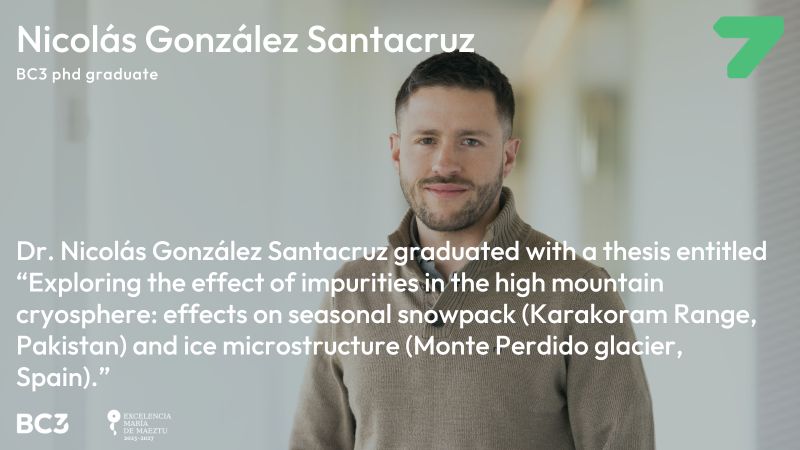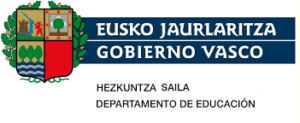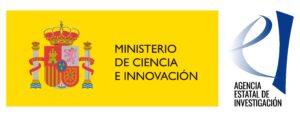 Our IzotzaLab colleague Dr. Nicolás González Santacruz earned his PhD with the thesis entitled “Exploring the impact of impurities in the high mountain cryosphere: Effects on the seasonal snowpack (Karakoram Range, Pakistan) and on the glacier ice microstructure (Monte Perdido Glacier, Spain)” today at Faculty of Science and Technology (UPV/EHU).
Our IzotzaLab colleague Dr. Nicolás González Santacruz earned his PhD with the thesis entitled “Exploring the impact of impurities in the high mountain cryosphere: Effects on the seasonal snowpack (Karakoram Range, Pakistan) and on the glacier ice microstructure (Monte Perdido Glacier, Spain)” today at Faculty of Science and Technology (UPV/EHU).
Dr. González Santacruz carried out his PhD with a scholarship granted by the Basque Government (ISEE project), and has also played important roles in many additional projects, including BalElur (financed by the María de Maeztu), PaleoICE, iMechPro, and BLAKARAN.
Abstract:
Aerosols comprise suspended particles in the atmosphere. Some are a product of human activities, such as Black Carbon (BC), generated by the incomplete combustion of fossil fuels. Other aerosols have a natural origin, such as mineral dust, which can be related to changes in land use resulting from human activities. These particles can settle on the high-mountain cryosphere, including seasonal or perennial snow covers and glaciers. They alter the radiative balance of the snow and ice surface, reducing its albedo and increasing the melting rate. Certain particles can withstand the snow-to-ice transformation, interacting with the microstructure and consequently impacting the mechanical properties of the ice. This thesis presents two case studies that illustrate both effects. The first one examines the impact of BC on the seasonal snow cover of the Godwin-Austen Glacier in the Karakoram Range, Pakistan, inquiring about its origin and potential consequences for regional water security. The second one involves a microstructural study on an ice core’s impurity-rich section obtained from the Monte Perdido Glacier in the Pyrenees Mountain Range. Preliminary chemical analyses suggest that the nature of these particles may originate from mineral dust. Through these two examples, the thesis aims to illustrate the effects of particles in this highly fragile ecosystem.
Thesis Committee:
Dr. Ignacio Antigüedad Auzmendi (UPV/EHU)
Dr. Enrique Serrano Cañadas (Universidad de Valladolid, UVA)
Dra. Ana Moreno Caballud Instituto Pirenaico de Ecología (IPE-CSIC)




